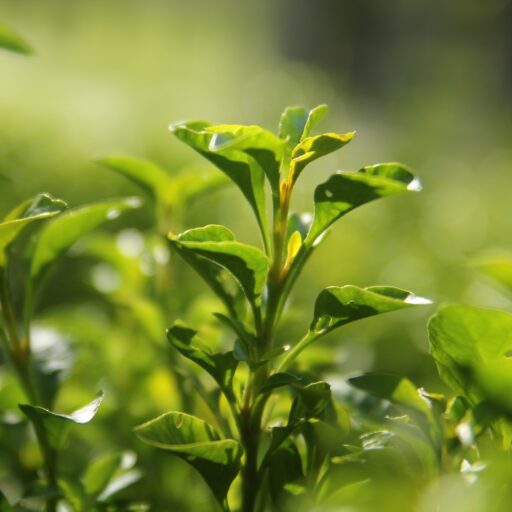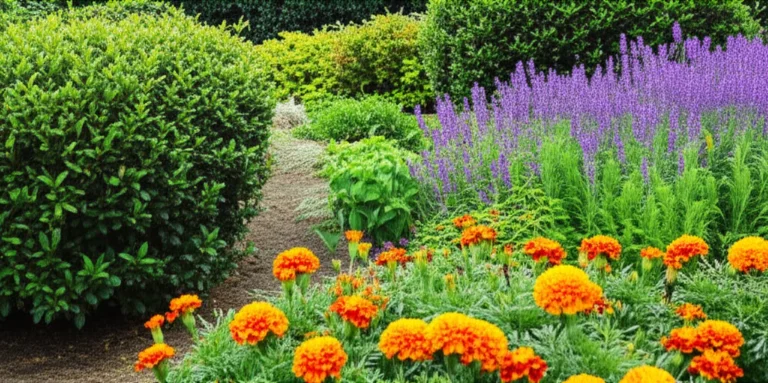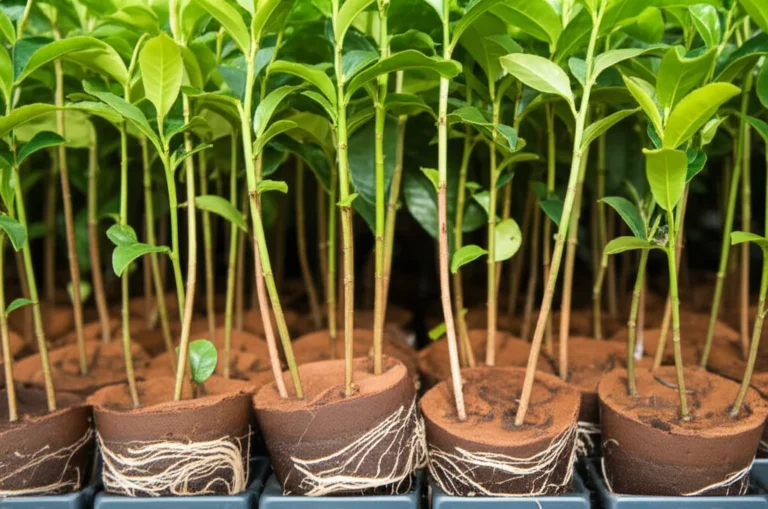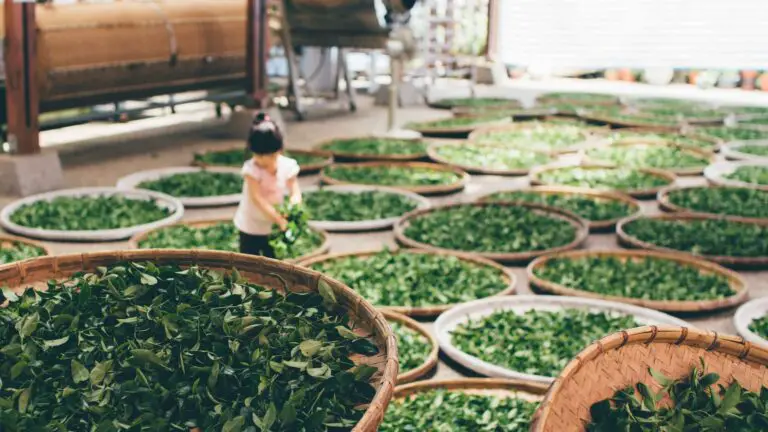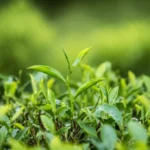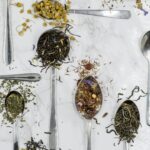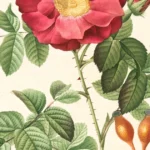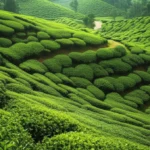Support our educational content for free when you purchase through links on our site. Learn more
How to Make Tea from Plants: 12 Easy Herbs to Grow & Brew (2025) 🍃
Have you ever wondered what it’s like to sip a cup of tea brewed from leaves you personally nurtured in your garden? At Growing Teas™, we’ve spent countless mornings harvesting fresh Camellia sinensis leaves and fragrant herbs like chamomile and lemon balm, transforming them into soul-soothing brews. But here’s a little secret: making tea from plants isn’t just about the classic tea bush. It’s an artful blend of gardening know-how, harvesting timing, drying techniques, and creative blending that turns ordinary leaves into extraordinary cups of tea.
In this guide, we’ll take you on a journey from planting your first tea seedling to crafting unique herbal blends that dance on your palate. Plus, we’ll share insider tips on avoiding bitterness, extending shelf life, and even making herbal balms from your garden’s bounty. Ready to become your own tea master? Keep reading — your perfect cup is closer than you think! ☕🌿
Key Takeaways
- Grow a variety of tea plants and herbs: From Camellia sinensis to chamomile and hibiscus, diversify your tea garden for endless flavor possibilities.
- Harvest at the right time: Morning picks after dew dries ensure peak flavor and nutrient retention.
- Master drying and storage: Low-temperature drying and airtight containers keep your tea fresh for up to two years.
- Experiment with blends and brewing: Use our step-by-step guide to craft unique teas tailored to your taste buds.
- Explore herbal remedies: Turn your tea plants into soothing balms and natural health boosters.
Ready to start growing? Check out these essentials:
- Tea Plants & Seeds: Amazon | Etsy
- Garden Tools: Corona Tools on Amazon
- Dehydrators: Nesco Food Dehydrator
Dive in and brew your way to tea bliss! 🌱🍵
Table of Contents
- ⚡️ Quick Tips and Facts About Making Tea from Plants
- 🌿 The Leafy Legacy: A Brief History of Tea and Herbal Infusions
- 🌱 Growing, Harvesting, and Processing Your Own Tea Leaves at Home
- 🍃 12 Great Herbs and Plants to Grow for Homemade Tea Blends
- 🌼 How to Design and Cultivate an Herbal Tea Garden That Thrives
- 🔥 Step-by-Step Guide: Crafting the Perfect Brew from Fresh and Dried Leaves
- 🧪 Unlocking Flavors: Blending Techniques for Unique Tea Experiences
- 🍰 Herbal Tea Pairings and Delicious Tea-Infused Dessert Recipes
- 💆♀️ Healing Powers: Making Herbal Balms and Remedies from Tea Plants
- 🌞 Eco-Friendly Backyard Tea Gardens: Creating a Shady, Sustainable Retreat
- 🌿 Midsummer Tea Garden Favorites: Plants That Shine in the Heat
- 🛡️ How to Identify and Remove Invasive Plants That Threaten Your Tea Garden
- 📺 Watch & Learn: Video Tutorials on Growing and Brewing Tea from Plants
- 📚 Recommended Reading: Fine Gardening and Tea Cultivation Resources
- ✅ Conclusion: Mastering the Art of Making Tea from Plants
- 🔗 Recommended Links for Tea Enthusiasts
- ❓ FAQ: Your Burning Questions About Making Tea from Plants Answered
- 📖 Reference Links and Trusted Sources
⚡️ Quick Tips and Facts About Making Tea from Plants
Welcome to the wonderful world of making tea from plants! At Growing Teas™, we’ve spent years cultivating, harvesting, and brewing teas right from our own gardens, and we’re here to spill the tea (pun intended) on what really works. Whether you’re a newbie or a seasoned leaf lover, these quick tips will jumpstart your journey:
- Start with the right plants: Camellia sinensis is the classic tea plant for green, black, white, and oolong teas. But don’t overlook herbs like chamomile, lemon balm, or rose hips for herbal infusions. Check out our 10 Best Tea Plants for Sale in 2025: Grow Your Own Brew! 🍃 for a curated starter list.
- Harvest timing is everything: Pick leaves early in the morning after dew evaporates but before the sun gets too hot for optimal flavor and nutrient retention.
- Drying matters: Dry herbs at low temperatures (100-125°F) to preserve flavor and medicinal properties. Avoid direct sunlight to prevent color and nutrient loss.
- Experiment with brewing: Fresh herbs often need less steeping time than dried. Typical ratios: 1 tsp dried or 2 tsp fresh herbs per cup of water.
- Storage is key: Store dried leaves in airtight, opaque containers away from heat and moisture to keep your tea fresh for up to two years.
Fun fact: Did you know that fresh herbs generally pack more flavor and nutrients than dried? But dried herbs are more convenient and last longer. So, why not grow a bit of both? 🌿
For more on growing and harvesting, explore our Herbal Tea Planting section.
🌿 The Leafy Legacy: A Brief History of Tea and Herbal Infusions
Tea is more than just a drink; it’s a cultural icon steeped in centuries of tradition. The story begins with Camellia sinensis, native to East Asia, whose leaves have been brewed for thousands of years. According to legend, Emperor Shen Nong discovered tea in 2737 BCE when leaves drifted into his boiling water. Fast forward, and tea has become a global phenomenon, with countless varieties and rituals.
But tea’s story doesn’t stop there! Herbal infusions, or tisanes, have been brewed worldwide from local plants—think chamomile in Europe, hibiscus in Africa, or lemongrass in Southeast Asia. These herbal teas often carry medicinal benefits and unique flavors.
At Growing Teas™, we love diving into the History of Tea to understand how ancient practices influence modern tea culture. It’s fascinating how a simple leaf can connect us across time and continents!
🌱 Growing, Harvesting, and Processing Your Own Tea Leaves at Home
Ready to roll up your sleeves? Growing your own tea plants is a rewarding adventure. Here’s how we do it at Growing Teas™:
Selecting the Right Tea Plants
- Camellia sinensis thrives in USDA Zones 7-9, prefers acidic, well-draining soil, and partial shade.
- For herbal teas, plants like lemon balm, mint, and chamomile are beginner-friendly and hardy.
Growing Tips
- Start with nursery plants or seeds.
- Maintain consistent moisture but avoid waterlogging.
- Fertilize with organic compost in early spring.
- Prune regularly to encourage bushy growth and harvestable leaves.
Harvesting
- Pluck the top two leaves and a bud for Camellia sinensis — this is the gold standard for quality tea.
- Harvest herbs just before flowering for peak flavor.
- Always harvest in the morning after dew dries.
Processing Your Leaves
| Step | Description | Tips from Growing Teas™ |
|---|---|---|
| Withering | Spread leaves thinly to reduce moisture for 2-3 hours | Use a well-ventilated, shaded area |
| Fixing | Heat leaves to stop oxidation (steaming or pan-firing) | For green tea, pan-firing in a wok works wonders |
| Rolling | Roll leaves gently to bruise and release juices | Use hands or a rolling pin; avoid crushing |
| Oxidation | Let leaves rest to develop flavor (black tea only) | Cover with a damp cloth and keep warm |
| Drying | Oven-dry at 120-130°C until leaves are crisp | Avoid overheating to preserve aroma |
For a detailed guide, check out our Green Tea Cultivation resources.
🍃 12 Great Herbs and Plants to Grow for Homemade Tea Blends
Why settle for one flavor when you can blend a garden of teas? Here are 12 of our favorites, with flavor notes and benefits:
| Plant | Flavor Profile | Benefits | Growing Tips |
|---|---|---|---|
| Camellia sinensis | Grassy, vegetal (green tea) | Antioxidants, mental alertness | Partial shade, acidic soil |
| Chamomile | Apple-like, floral | Calming, digestive aid | Full sun, well-drained soil |
| Lemon Balm | Lemon-citrus | Calming, antiviral | Shade tolerant, moist soil |
| Peppermint | Cool, refreshing | Digestive aid, headache relief | Full sun to shade, moist soil |
| Hibiscus | Tart, cranberry-like | Vitamin C-rich, lowers blood pressure | Full sun, drought tolerant |
| Rose Hips | Tart, fruity | Vitamin C powerhouse | Full sun, prune after flowering |
| Lavender | Floral, sweet | Relaxing, sleep aid | Full sun, well-drained soil |
| Lemon Verbena | Sweet lemon | Digestive, calming | Full sun, prune to maintain shape |
| Sage | Earthy, slightly bitter | Anti-inflammatory, cognitive boost | Full sun, drought tolerant |
| Echinacea | Earthy, floral | Immune support | Full sun, well-drained soil |
| Borage | Cucumber-like, fresh | Anti-inflammatory, mood booster | Full sun, self-seeds easily |
| Rosemary | Piney, aromatic | Circulation stimulant | Full sun, drought tolerant |
Pro tip: Mix and match these herbs to create your own signature blends! For blending inspiration, visit our DIY Tea Blending section.
🌼 How to Design and Cultivate an Herbal Tea Garden That Thrives
Creating an herbal tea garden is like composing a symphony of flavors and aromas. Here’s how to orchestrate yours:
Planning Your Garden
- Location: Choose a spot with at least 4-6 hours of sunlight.
- Soil: Test and amend soil pH to 6.0-7.0 for most herbs.
- Layout: Group plants by water needs and growth habits.
- Companions: Plant mint in containers to prevent invasiveness.
Planting and Care
- Start seeds indoors or buy starter plants.
- Mulch to retain moisture and suppress weeds.
- Water deeply but infrequently to encourage strong roots.
- Harvest regularly to promote bushier growth.
Seasonal Tips
- In colder climates, grow tender herbs like lemon verbena in pots and bring indoors during winter.
- Use raised beds or containers if soil drainage is poor.
At Growing Teas™, our backyard tea garden is a shady oasis with a mix of sun-loving and shade-tolerant herbs, proving that even small spaces can yield bountiful brews.
🔥 Step-by-Step Guide: Crafting the Perfect Brew from Fresh and Dried Leaves
Brewing tea from your garden is where the magic happens. Here’s our foolproof method:
Step 1: Measure Your Leaves
- Fresh herbs: Use about 2 teaspoons per cup.
- Dried herbs: Use 1 teaspoon per cup.
Step 2: Water Temperature
| Tea Type | Water Temp (°F) | Steep Time |
|---|---|---|
| Green Tea | 160-180 | 2-3 minutes |
| Black Tea | 200-212 | 3-5 minutes |
| Herbal Tea | 212 | 5-10 minutes |
| White Tea | 160-185 | 4-5 minutes |
Step 3: Steeping
- Pour hot water over leaves in a teapot or infuser.
- Cover to trap heat and essential oils.
- Avoid over-steeping to prevent bitterness.
Step 4: Strain and Serve
- Use a fine mesh strainer or tea infuser.
- Add natural sweeteners like honey or stevia if desired.
Growing Teas™ insider tip: For fresh herbs, try cold brewing by steeping leaves in cold water overnight in the fridge for a refreshing twist.
🧪 Unlocking Flavors: Blending Techniques for Unique Tea Experiences
Blending tea is like painting with flavors—each herb adds its own hue. Here’s how to get started:
Basic Blending Ratios
- Start with a base herb (e.g., green tea or chamomile).
- Add 10-30% complementary herbs (e.g., mint, lemon balm).
- Include 5-10% accent flavors (e.g., rose petals, lavender).
Popular Blend Ideas
- Peace on Earth: Skullcap, passiflora, chamomile, spearmint, stevia (from Fine Gardening).
- Cool Sun Tea: Hibiscus, rose hips, lemon verbena, orange slices, cinnamon chips.
Tips for Success
- Use dried herbs for consistent flavor.
- Label blends with date and ingredients.
- Store in airtight containers away from light.
For more creative recipes, visit our DIY Tea Blending hub.
🍰 Herbal Tea Pairings and Delicious Tea-Infused Dessert Recipes
Tea and desserts? Oh yes! Pairing your homemade teas with complementary treats elevates the experience.
Pairing Suggestions
| Tea Type | Dessert Pairing |
|---|---|
| Chamomile | Honey lavender shortbread |
| Mint | Dark chocolate truffles |
| Hibiscus | Citrus sorbet |
| Lemon Verbena | Lemon pound cake |
| Green Tea | Matcha cheesecake |
Tea-Infused Dessert Recipe: Chamomile Honey Panna Cotta
- Steep 2 tbsp dried chamomile in 1 cup cream for 10 minutes.
- Strain and mix with gelatin and honey.
- Chill until set and serve with fresh berries.
Pro tip: Use tea as a poaching liquid for fruits or to infuse syrups for cocktails and mocktails.
💆♀️ Healing Powers: Making Herbal Balms and Remedies from Tea Plants
Tea plants aren’t just tasty—they’re therapeutic! Here’s how to harness their healing magic:
Popular Healing Herbs
- Chamomile: Anti-inflammatory, soothes skin.
- Lavender: Calming, antiseptic.
- Rosemary: Stimulates circulation.
- Calendula: Heals wounds and skin irritations.
Making a Simple Herbal Balm
- Infuse dried herbs in olive oil over low heat for 2 hours.
- Strain and mix infused oil with beeswax (1 part beeswax to 4 parts oil).
- Heat gently until beeswax melts, pour into tins, and cool.
- Use for dry skin, minor cuts, or muscle aches.
Our team swears by homemade balms after long gardening days—your hands will thank you! For more on herbal remedies, visit our Health Benefits of Tea section.
🌞 Eco-Friendly Backyard Tea Gardens: Creating a Shady, Sustainable Retreat
Imagine a backyard that’s part tea garden, part sanctuary. Here’s how to make it happen sustainably:
- Shade is your friend: Many tea plants thrive under dappled sunlight. Plant taller trees or install shade cloths.
- Composting: Recycle garden waste into nutrient-rich compost to feed your tea plants.
- Water conservation: Use drip irrigation or rain barrels to minimize water waste.
- Pollinator-friendly: Include flowering herbs like borage and lavender to attract beneficial insects.
Our eco-friendly tea garden is a haven for wildlife and a source of fresh brews year-round. Want to see how we do it? Check out our Video Tutorials for a virtual tour!
🌿 Midsummer Tea Garden Favorites: Plants That Shine in the Heat
Summer heat can be tough on plants, but some tea herbs thrive and even improve in flavor under the sun’s blaze:
- Mint: Thrives with regular watering; harvest before flowering.
- Lemon balm: Intensifies lemony aroma in hot weather.
- Rosemary: Loves full sun and drought conditions.
- Hibiscus: Produces vibrant, tart flowers perfect for iced teas.
- Sage: Develops a stronger, earthy flavor in summer.
Keep these plants happy with morning watering and mulching to retain moisture. They’ll reward you with bold flavors and refreshing teas!
🛡️ How to Identify and Remove Invasive Plants That Threaten Your Tea Garden
Invasive plants can sneak into your tea garden and steal nutrients, water, and space. Here’s how to keep your garden safe:
Common Culprits
- Japanese knotweed
- English ivy
- Garlic mustard
- Kudzu
Identification Tips
- Rapid growth and dense coverage
- Crowding out native or desired plants
- Difficult to uproot due to deep roots or runners
Removal Steps
- Manually pull or dig out small infestations.
- Use targeted herbicides carefully, avoiding your tea plants.
- Mulch heavily to suppress regrowth.
- Replace cleared areas with desirable tea herbs.
Our team recommends vigilance and early action to prevent invasives from taking over. For more gardening wisdom, check out Fine Gardening Magazine.
📺 Watch & Learn: Video Tutorials on Growing and Brewing Tea from Plants
Sometimes seeing is believing! We’ve curated a playlist of top-notch videos to guide you visually through the tea-making process:
- Growing Camellia sinensis at Home by Tea Masters: Covers planting, pruning, and harvesting.
- Herbal Tea Garden Setup by Fine Gardening: Tips on design and companion planting.
- DIY Tea Blending Workshop by Cassie Liversidge: Creative recipes and blending techniques.
- Drying and Processing Tea Leaves by Renegade Tea Estate: Step-by-step with practical tips.
These videos complement our written guides perfectly and help you avoid common pitfalls. Ready to watch? Dive in and brew along!
📚 Recommended Reading: Fine Gardening and Tea Cultivation Resources
For those who want to geek out on tea plants and gardening, here are some must-reads:
- Homegrown Tea by Cassie Liversidge — a beautifully illustrated guide to planting, harvesting, and blending teas and tisanes.
- The Tea Book by Linda Gaylard — covers history, culture, and brewing techniques.
- Fine Gardening Magazine — regularly features herbal tea garden articles and seasonal tips.
- The Herbal Medicine-Maker’s Handbook by James Green — for those interested in medicinal uses of tea plants.
We also recommend exploring our own Growing Teas™ blog categories like Green Tea Cultivation and Health Benefits of Tea for ongoing inspiration.
✅ Conclusion: Mastering the Art of Making Tea from Plants
Phew! We’ve journeyed from seed to sip, uncovering the secrets to growing, harvesting, blending, and brewing your own teas right at home. Whether you’re nurturing a Camellia sinensis bush for classic green or black teas, or cultivating a vibrant herbal garden bursting with chamomile, lemon balm, and hibiscus, the joy of crafting your own cup is unmatched.
Key takeaways:
- Choose your plants wisely and tend them with care.
- Harvest at the right time for peak flavor and nutrients.
- Dry and store your leaves properly to preserve freshness.
- Experiment with blends to find your signature brew.
- Use your tea garden as a sustainable, healing retreat.
Remember that making tea from plants is both an art and a science—don’t be afraid to experiment with temperatures, steep times, and blends. As the Renegade Tea Estate wisely puts it, “All tea makers have their own tips and tricks, and testing is the only way towards success here :)” (source).
So, grab your pruning shears, your favorite teapot, and get ready to sip on the fruits (and leaves!) of your labor. Your perfect cup of tea is just a garden away. 🍵🌿
🔗 Recommended Links for Tea Enthusiasts
Ready to start growing and brewing? Here are some top products and books we recommend:
-
Tea Plants and Seeds:
-
Garden Tools:
-
Books:
- Homegrown Tea by Cassie Liversidge: Amazon Link
- The Tea Book by Linda Gaylard: Amazon Link
- The Herbal Medicine-Maker’s Handbook by James Green: Amazon Link
Happy growing and brewing! 🌱🍵
❓ FAQ: Your Burning Questions About Making Tea from Plants Answered
What plants can be used to make herbal tea?
Herbal teas, or tisanes, can be made from a wide variety of plants beyond the traditional Camellia sinensis. Popular choices include chamomile, lemon balm, peppermint, hibiscus, rose hips, lavender, lemon verbena, sage, echinacea, borage, and rosemary. Each offers unique flavors and health benefits, from calming effects to immune support. When selecting plants, consider your climate, soil, and desired flavor profile. For a comprehensive list and growing tips, visit our Herbal Tea Planting section.
How do I dry and store tea leaves from my garden?
Drying and storing tea leaves properly is crucial for preserving flavor and medicinal properties. Here’s how:
- Drying: Harvest in the morning after dew evaporates. Spread leaves thinly in a well-ventilated, shaded area or use a dehydrator set between 100-125°F. Avoid direct sunlight to prevent nutrient loss. Dry until leaves are crisp but not burnt.
- Storing: Place dried leaves in airtight, opaque containers (glass jars or tins). Store in a cool, dark, and dry place away from heat and moisture. Properly stored tea can last 1-2 years.
- Tip: Label containers with the harvest date and plant name to keep track.
For detailed drying methods, see our Green Tea Cultivation resources.
What are the best herbs to combine for a unique tea flavor?
Blending herbs is an art! Start with a base like green tea or chamomile, then add complementary and accent herbs. Popular blends include:
- Peace on Earth: Skullcap, passiflora, chamomile, spearmint, and stevia.
- Cool Sun Tea: Hibiscus, rose hips, lemon verbena, orange slices, and cinnamon chips.
Balance flavors by mixing 60-80% base herb, 10-30% complementary herbs, and 5-10% accent flavors. Experiment and keep notes! Our DIY Tea Blending section is packed with recipes and tips.
Can I grow my own tea plants at home, and if so, which varieties are easiest to cultivate?
Absolutely! Growing your own tea plants is rewarding and doable with the right conditions. Camellia sinensis prefers USDA Zones 7-9, acidic soil, and partial shade. For beginners, herbs like lemon balm, mint, chamomile, and lavender are easier and faster to grow. Starting with nursery plants speeds up the process. Remember to harvest carefully and prune regularly to encourage healthy growth. For detailed growing guides, visit our Green Tea Cultivation and Herbal Tea Planting pages.
How do I prevent bitterness when brewing homemade tea?
Bitterness often comes from over-steeping or using water that’s too hot. To avoid this:
- Use the right water temperature for your tea type (e.g., 160-180°F for green tea).
- Steep for the recommended time (usually 2-5 minutes).
- Use fresh or properly dried leaves.
- Experiment with leaf quantity; sometimes less is more.
Our Step-by-Step Brewing Guide has more detailed tips.
📖 Reference Links and Trusted Sources
- Renegade Tea Estate, How to make tea from Camellia Sinensis at home? — https://www.renegadetea.com/blogs/renegade-rumblings/how-to-make-tea-from-camellia-sinesis-at-home
- Fine Gardening, Herbal Tea Garden — https://www.finegardening.com/article/herbal-tea-garden
- Treehugger, How to Grow and Make Your Own Tea — https://www.treehugger.com/how-to-grow-and-make-your-own-tea-4864112
- Corona Tools Official Website — https://www.coronatools.com
- Nesco Food Dehydrator — https://www.nesco.com/
For further inspiration and expert advice, explore Growing Teas™ categories: Green Tea Cultivation, Herbal Tea Planting, and DIY Tea Blending.
